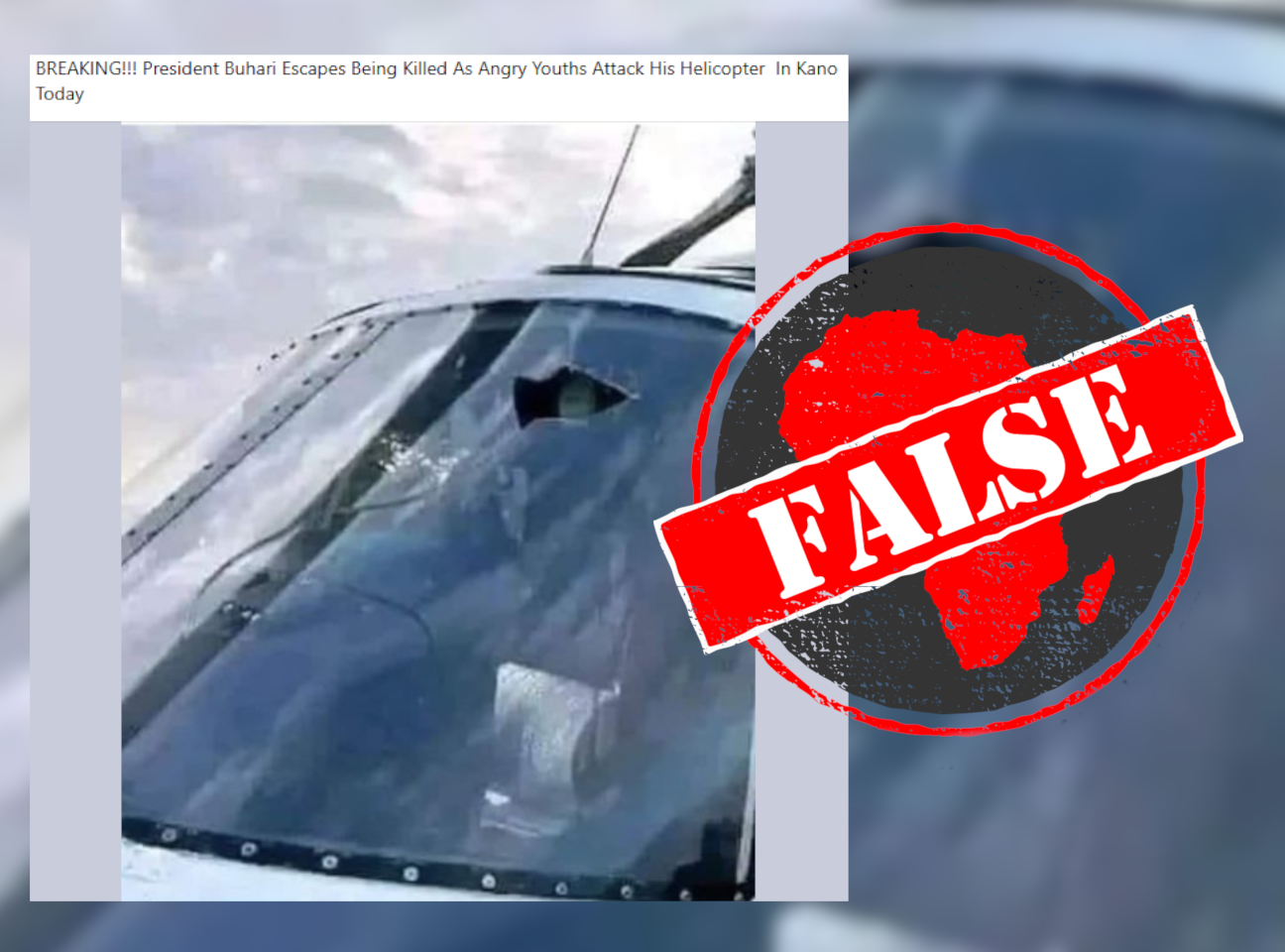IN SHORT: Is this photo proof that Nigerian president Muhammadu Buhari’s helicopter was attacked by “angry youths” in Kano state in January 2023? No, the photo was taken in Kenya in 2022.
A photo of a helicopter with a hole smashed through its windscreen is circulating on Facebook with the claim that Nigerian president Muhammadu Buhari was inside – and “escaped being killed” by “angry youths”.
The photo’s most common caption reads: “BREAKING!!! President Buhari Escapes Being Killed As Angry Youths Attack His Helicopter In Kano Today.”
Kano in northern Nigeria is the country’s most populous state.
Most of the claims were posted in late January 2023. See some of them here, here, here, here, here, here, here and here.
Buhari will step down after the presidential election on 25 February.
But does the photo really show Buhari’s helicopter after an attack in Kano?

Photo from Kenya
A TinEye reverse image search reveals that the photo was taken in April 2022, in Kenya.
It appears in an article on the website of Kenya’s Standard newspaper.
Here the photo’s caption reads: “Raila Odinga’s chopper that was damaged in Soy, Uasin Gishu County on April 1, 2022.”
The helicopter was carrying Kenyan politician Raila Odinga’s entourage to a funeral in Soy, Uasin Gishu county.
Odinga is the leader of the Orange Democratic Movement and was the presidential candidate of the Azimio la Umoja One Kenya coalition in Kenya’s August 2022 general elections. He lost to current president William Ruto.
On 1 April 2022, Odinga posted a statement on his official Facebook account confirming that the incident took place in Uasin Gishu, where he was attending a funeral.
The photo was not taken in Nigeria.
Republish our content for free
For publishers: what to do if your post is rated false
A fact-checker has rated your Facebook or Instagram post as “false”, “altered”, “partly false” or “missing context”. This could have serious consequences. What do you do?
Click on our guide for the steps you should follow.
Publishers guideAfrica Check teams up with Facebook
Africa Check is a partner in Meta's third-party fact-checking programme to help stop the spread of false information on social media.
The content we rate as “false” will be downgraded on Facebook and Instagram. This means fewer people will see it.
You can also help identify false information on Facebook. This guide explains how.



Add new comment